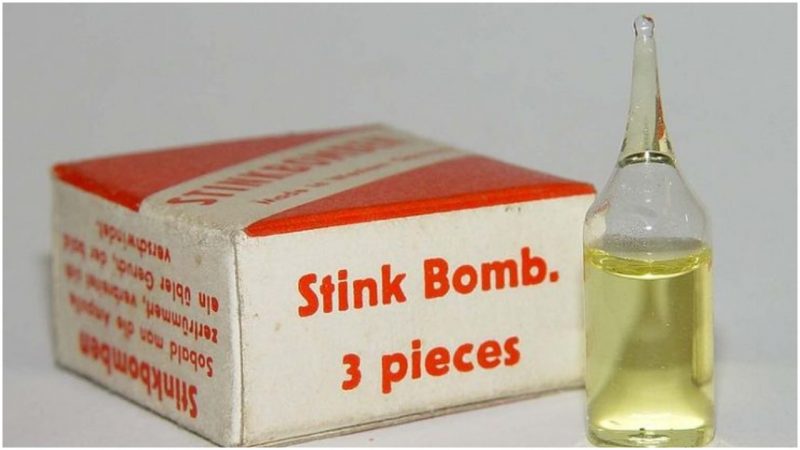The desire to outwit the enemy and achieve military success can lead to unplanned military inventions during periods of war. Among these many developments and inventions, one can often see how a creative approach led to interesting results. The following is a list of unusual inventions from the Second World War, though of course it is by no means a complete list.
Inflatable tanks
World-renowned fashion designer Bill Blass fought during the Second World War in the U.S. Army’s 603rd Camouflage Battalion. This special unit had the goal and means for disinforming the enemy about the location of Allied forces.
One of the means for misinformation was Sherman inflatable tanks which were used as dummies, particularly on D-Day, to deceive the enemy.
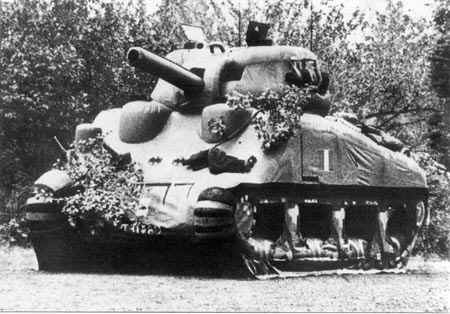
Garlic Chocolate
When sending spies and secret agents overseas, Great Britain had to make sure that they could blend into the local crowd by any means. Agents had to act, look, speak, and even smell appropriate.
According to Peter Taylor, author of the book Weird War Two, the story goes that agents who were sent to Spain did not have the appropriate smell because they did not eat garlic. In Britain, the attitude towards garlic at the time was not favorable. This problem was solved by adding garlic to chocolates in a bid to make it more enjoyable to eat.
It is not known whether this project was successful or not.

CC BY 2.0
Itchy powder
A powder that acted as a strong skin irritant was disguised as talc and smuggled into Europe. Resistance members in occupied countries distributed this powder in clothing factories and laundry facilities where they could secretly apply it to German uniforms.
It seemed to have worked. Apparently, at least one German U-boat was forced to return to port because the sailors thought they had a strange skin condition.
The scheme was also successful in Norway, where local resistance members began putting the powder in condoms intended for German troops. The treated condoms were sent to the Trondheim Region, where the local hospital was soon filled with German soldiers.
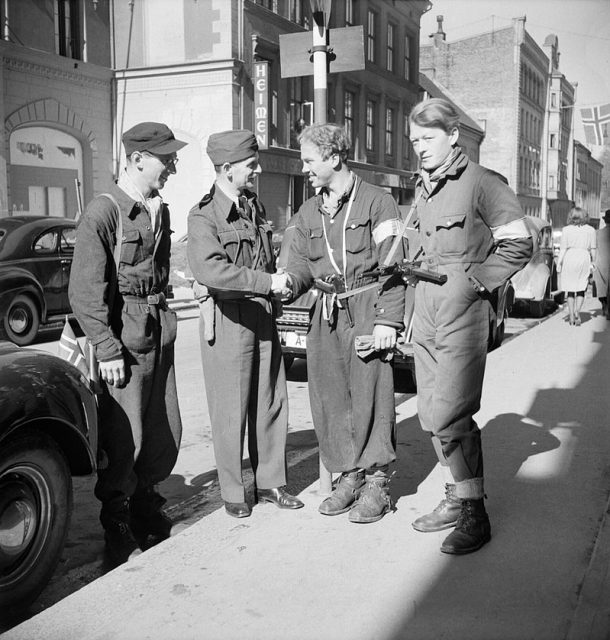
Fake feet
Fake feet were a good tool for masking a trail, saving time that would otherwise be spent sweeping traces. They was used by agents who landed on beaches in the Pacific theater.
“The idea was that you’d put these fake bare feet over your actual shoes and it would look as if a native was walking over the beach rather than you,” Taylor said.
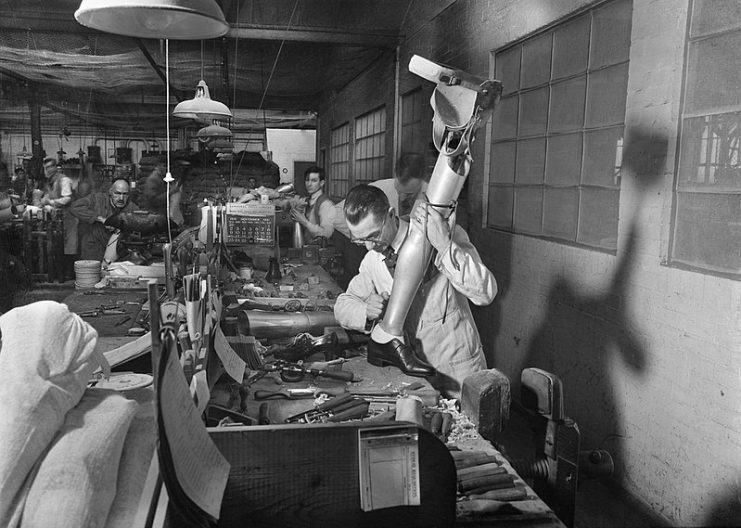
Stink bombs
The British spent large sums on the development of a super smelly bomb called the S-capsule. Placed in the pocket of a German soldier, once crushed the capsule released a terrible stench which remained even after numerous cleanings.
Since winter clothes in the German army were in short supply, the soldier had to either freeze or suffer a terrible smell. The idea was that a badly smelling officer might lose credibility in the eyes of his subordinates.
The Americans also worked on a similar invention. Taylor said that in the end, “I think in both cases they had to kind give up using it because people that administered it ended up smelling as bad as the people they were aiming it at.”
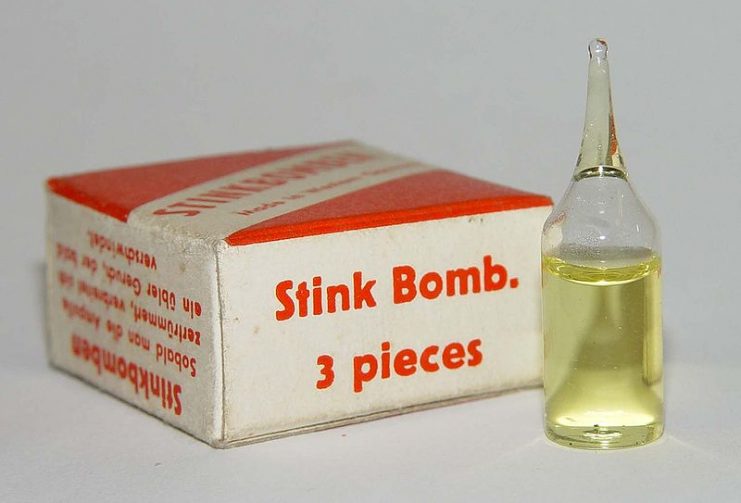
Exploding poop
There are cases in which the British sent members of the Resistance members throughout Europe imitation manure filled with explosives. The idea was to leave it on the road where it would not be suspected by the drivers of vehicles that would inevitably run over it.
“The actual dung was copied from the real thing supplied by the London Zoo. And there were different kinds of dung depending on which kind of part of Europe” it was going to, Taylor said.
Exploding rats
The British proposed this idea in 1941 after a series of medical experiments. The idea was to fill rat corpses with explosives and toss them into German factories. It was assumed that eventually, one of the German employees, finding a dead rat near the furnace, would throw it into the fire. This, in turn, should have led to an explosion.
The British planned to plant booby-trapped rats in the boiler rooms of German trains, factories, factories, and power plants. In reality, this information fell into the hands of the Germans. The Germans overestimated the importance of the British project and began to spend a large amount of time guarding against it.
In turn, the British considered the project a distracting maneuver: the leakage of information caused a greater panic than the possible use of exploding rats in practice.
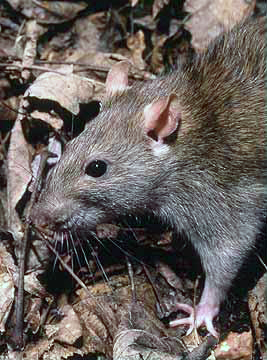
Laxatives
The coastline of Norway had an economy based mainly on salted fish. Thus, when the Germans announced that they were requisitioning Norway’s entire catch of sardines, people were outraged. In the ranks of the Resistance was an informant at Nazi headquarters who said that the sardines would be used to feed German troops. Canned food was supplied to U-boat crews.
At the request of Resistance members, the British sent large reserves of croton oil. This oil has a fishy taste and a strong laxative effect. Norwegians secretly delivered it to canneries, where it was mixed with vegetable oil and added to sardines. Soon after, the sardines were sent to German submarines.
In one case, this operation was a great success. However, a large-scale operation based on a laxative was never realized, since the war ended before it could be implemented.
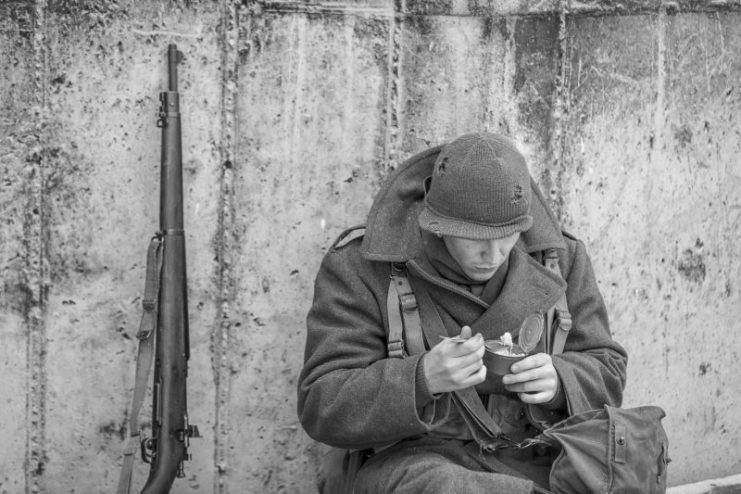
Pink planes
Some fighters during the Second World War were so specialized that they flew only at certain times of the day. To make the aircraft less noticeable both at sunset and at sunrise, they were painted pink.
“That seems [to be] something that’s very very strange and did work surprisingly well,” Taylor said. Although camouflage on aircraft was hardly a novelty, it was a clever tactic at the time to make “invisible” airplanes thanks to pink paint.
